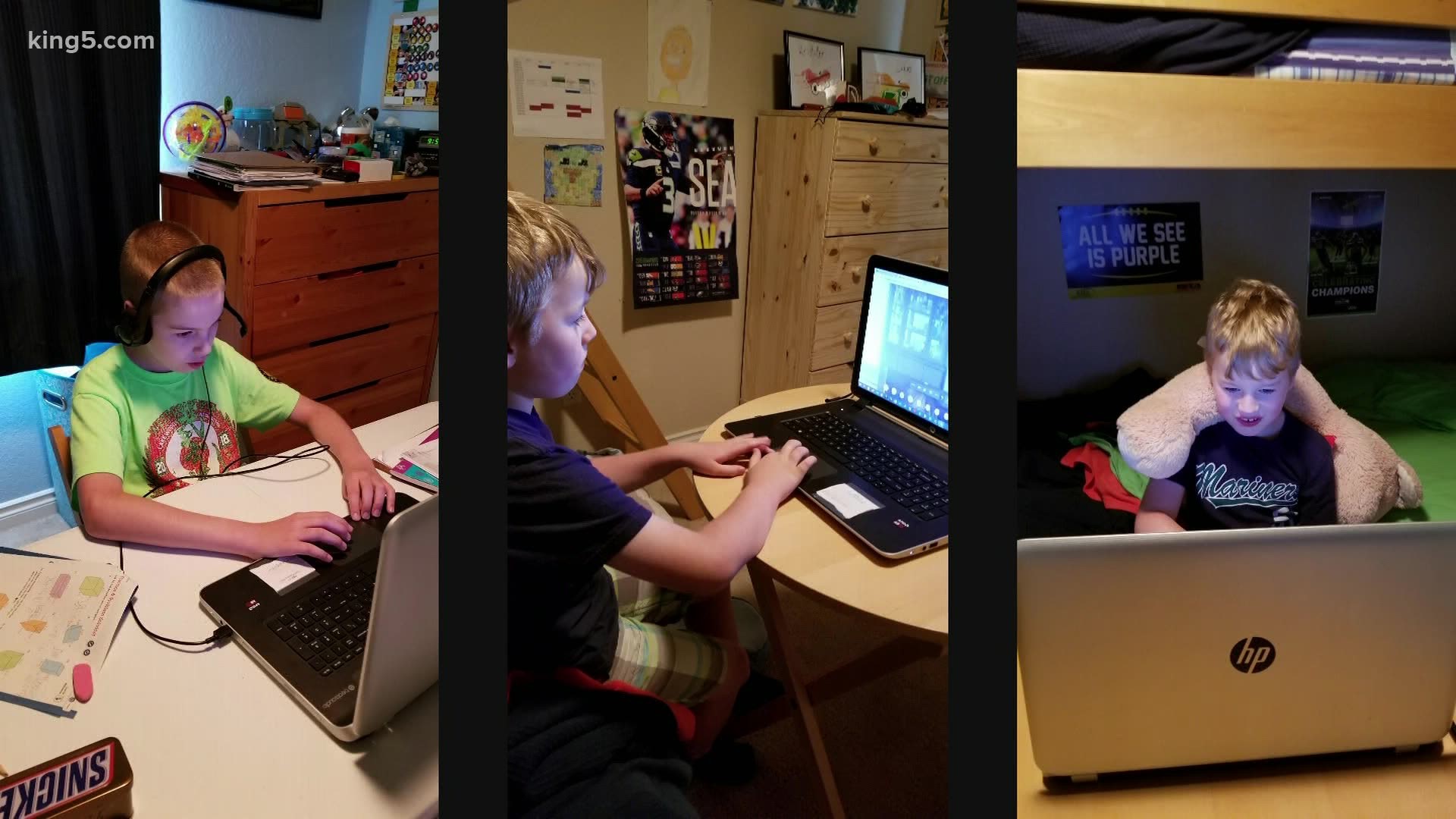ST. LOUIS COUNTY, Mo. — As students bring their virtual classrooms into their homes, they are learning the ins and outs of online platforms like Zoom, Webex and Google Meet. And while they can be useful tools, they can also come with distractions and disruptions.
To get the most out of online learning, school technology experts suggested students and parents understand some basics of online etiquette — or "netiquette."
The most basic tip is one even adults forget.
"Keep the mute button on whenever possible," said Dawnette Wiskur, the Rockwood School District's coordinator of professional learning. "Background noise, barking dogs, doors shutting, conversation is often amplified during online meetings."
Zoom and other platforms allow virtual backgrounds, which can be helpful if students want to maintain privacy. Wiskur suggested students use simple backgrounds without movement.
"I think that with filters and other tools it would be just like in the regular classroom. If it has the potential to distract your classmates, then avoid using it," she said.
Many Rockwood teachers have set their own online classroom expectations, but many of them are similar, Wiskur said. They include:
- Avoid using your phone to have conversations with your friends, play games or otherwise distract yourself. In a virtual environment, it is pretty easy to see who is off-task.
- Use individual's names when addressing them or restating their ideas. Part of building an online community is to see and value all members.
- As in real life, treat classmates with respect. Clarify with your teacher and classmates what that looks and sounds like in an online environment.
- If you have to step away from the computer, you can drop a message in the chat for your teacher letting him or her know you'll be right back.
- Don't dominate the conversation or talk over your classmates (raise your virtual hand or make sure and share your idea in the chat).
Wiskur recommended parents set up work areas in their homes that are free from distractions, with adequate lighting and the computer or tablet at eye-level.
"If you are using the dining room table or other shared space, parents may want to invest in something portable to keep all of the student's supplies in," she said. "At our house, I purchased a three-level rolling cart from a craft store that could store supplies and materials but could easily be relocated as needed."
On the flip side, the district said it's important for teachers to also follow some guidelines. Rockwood distributed the following tips for teacher and staff, which include:
- Be mindful of rituals students are missing. Being greeted by smiling faces, back-to-school nights, seeing old friends — students will miss these things. But we have to get them excited about new possibilities and build relationships in new ways.
- Communicate clear end goals for each session. This can help students focus their time and attention in the class and when working independently. It also helps the instructor manage the content.
- Do not assume students are tech experts. Students often click and scroll but may need clear instructions on uploading documents, creating videos, proper discussion board etiquette and creating PDFs.
- Meet students where they are in the journey. Some students may need help with organization, others may struggle with paying attention online and with content. Get feedback frequently from students about what they need from you and be willing to adjust.
- Do not make students turn on their camera. Traditionally, students are guests in our classroom. We have to recognize that now we are guests in their homes, and we can't know what might be going on.
- Do not lecture and direct instruct for more than 20 minutes. Students will "check out" after too long. Make sure that you are breaking up instruction and giving them time to reflect.
- Use Zoom features to maximize interaction. Polls are a great way to check in. Use the chat to share questions, answers, work, etc. Breakout groups can allow for more individualized discussion. Use the mute feature to diminish distracting background noise.
- Include digital norms in your class agreements. The tenets of good digital citizenship are especially important in online teaching. Your class agreements should address how students will interact with you and their classmates in a virtual environment.


